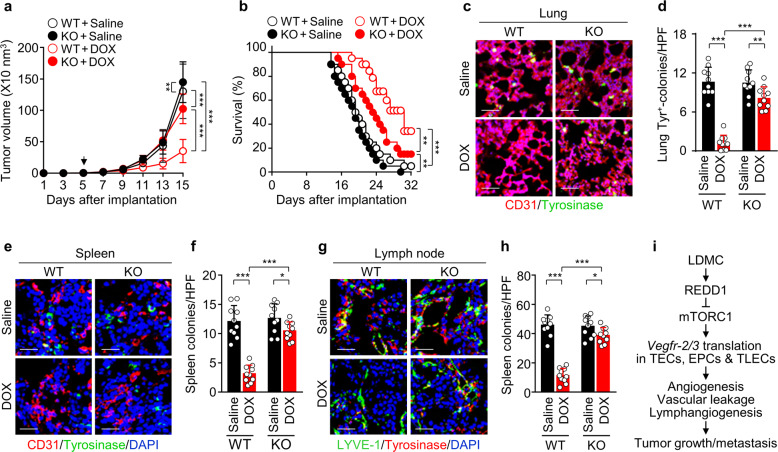Fig. 7. LDMC with DOX inhibits tumor progression and metastasis in B16F10 tumor-bearing WT but not Redd1−/− mice.
a Comparison of tumor growth in the B16F10 tumor-bearing WT and Redd1−/− mice metronomically treated with saline or DOX (n = 12 per group). b Kaplan–Meier survival curves of the WT and Redd1−/− mice treated with saline or metronomic DOX (n = 20 per group). c Representative images of lung-metastatic tyrosinase+ colonies and CD31+ blood vessels. Scale bar, 50 μm. d Quantification of tyrosinase+ colonies per high-power field (HPF) (n = 10). e Representative images of spleen-metastatic tyrosinase+ colonies and CD31+ blood vessels. Scale bar, 50 μm. f Quantification of tyrosinase+ colonies (n = 10). g Representative images of lymph node-metastatic tyrosinase+ colonies and LYVE-1+ lymphatic vessels. Scale bar, 50 μm. h Quantification of tyrosinase+ colonies (n = 10). i Diagram depicting inhibition of tumor angiogenesis, lymphangiogenesis, vessel permeability, growth, and metastasis by LDMC-induced REDD1 expression and subsequent translational repression of Vegfr-2/3 mRNAs in tumor vascular and lymphatic endothelial cells (TVECs and TLECs). Data, except for those for the mouse survival curve (b), are presented as the mean ± SD. *P < 0.05, **P < 0.01, ***P < 0.001.

